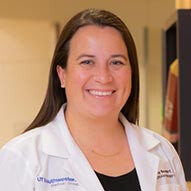Pediatric otoacoustic emissions (OAE)
What is a pediatric otoacoustic emissions (OAE) test?
Otoacoustic emissions (OAEs) are low-intensity sound waves produced in the inner ear. In a healthy ear, outer hair cells on the cochlea will "echo" acoustic stimuli. An otoacoustic emissions test is an effective screening method to assess hearing in newborns.
Audiologists measure OAEs by inserting a probe equipped with speakers and a microphone into your baby's outer ear canal. The probe's speakers generate clicks while the microphone measures the resulting OAEs. The OAE test is quick and painless and provides the screener with immediate results. Most newborns respond well to OAE testing, although a few patients may need further screenings.
Types
Distortion product OAE (DPOAEs) emit a pair of brief tones at two different frequencies. DPOAE can test for cochlear or noise-induced damage and ototoxicity.
Transient evoked OAE (TEOAEs) emit a single click that covers a broad range of frequencies. It is most often used in infant screening, to confirm other tests or to check cochlear function.
What are the benefits of pediatric otoacoustic emissions (OAE) testing?
Otoacoustic emissions can reveal abnormalities in your baby's inner ear.
An OAE test can identify the following:
Blockages in the auditory canal
Normal inner ear function
Proper tympanic membrane and outer hair cell function
Early detection of ear problems can help prevent future hearing loss.
What can I expect with pediatric otoacoustic emissions (OAE) testing?
To begin the test, the screener will insert the OAE device into your child's outer ear. The probe is equipped with speakers and a microphone to provide feedback.
Next, the doctor will activate the click(s). The device sends the test results to a computer. The audiologist will immediately be able to tell if he needs to refer your child for additional tests.
A referral does not necessarily mean your child has an ear disorder. Poor responses can result if the room is too noisy, your baby is fussy or if there is fluid in a newborn's ear (from the birth process). An OAE test is usually done a second time in the case of a poor response during the first screening.
What can I expect during pediatric otoacoustic emissions (OAE) testing?
An OAE test typically takes just a few minutes. Your child does not need to actively participate to receive the test.
Pediatric otoacoustic emissions (OAE) doctors and providers
 Jennifer Alford, AuDAudiologist
Jennifer Alford, AuDAudiologist Bethany Baumgart, AuDAudiologist
Bethany Baumgart, AuDAudiologist Bethany Brum, AuDAudiologist
Bethany Brum, AuDAudiologist Tiana Delgado, AuDAudiologist
Tiana Delgado, AuDAudiologist William Even, AuDAudiologist
William Even, AuDAudiologist Jason Feinberg, AuDAudiologist
Jason Feinberg, AuDAudiologist Kelli Freeman, AuDAudiologist
Kelli Freeman, AuDAudiologist Andrew Golboro, AuDAudiologist
Andrew Golboro, AuDAudiologist Brenna Holloway, AuDAudiologist
Brenna Holloway, AuDAudiologist Laurie Huynh, AuDAudiologist
Laurie Huynh, AuDAudiologist Jenna Jones, AuDAudiologist
Jenna Jones, AuDAudiologist Christina Lobarinas, AuDAudiologist
Christina Lobarinas, AuDAudiologist Amanda Lovering, AuDAudiologist
Amanda Lovering, AuDAudiologist Kris Owen, AuDAudiologist
Kris Owen, AuDAudiologist Sarah Elizabeth Taylor Phillips, AuDAudiologist
Sarah Elizabeth Taylor Phillips, AuDAudiologist Madalyn Rieck, AuDAudiologist
Madalyn Rieck, AuDAudiologist Teriann Scheets, AuDAudiologist
Teriann Scheets, AuDAudiologist Paige Wahl, AuDAudiologist
Paige Wahl, AuDAudiologist Johanna Whitson, AuDAudiologist
Johanna Whitson, AuDAudiologist